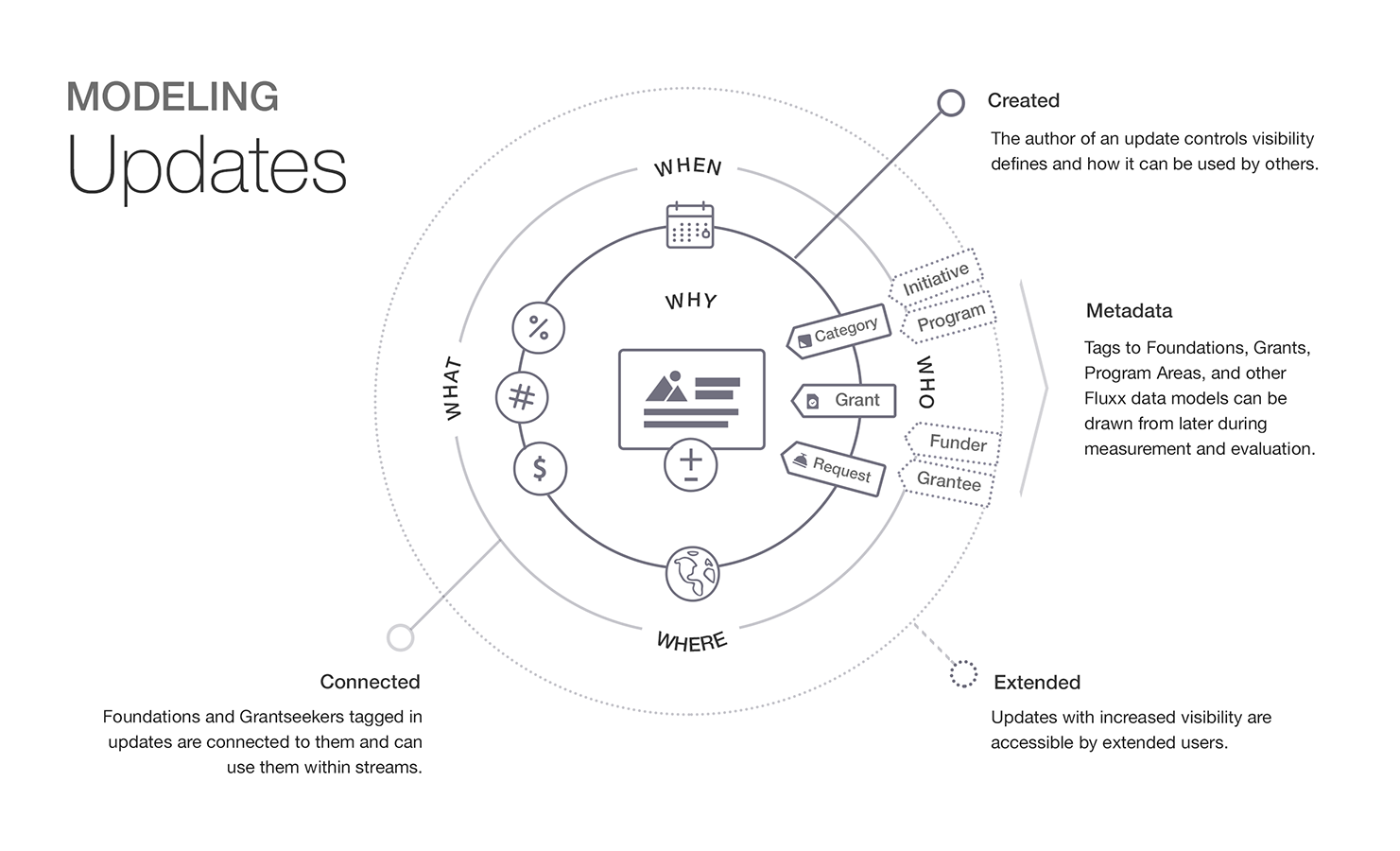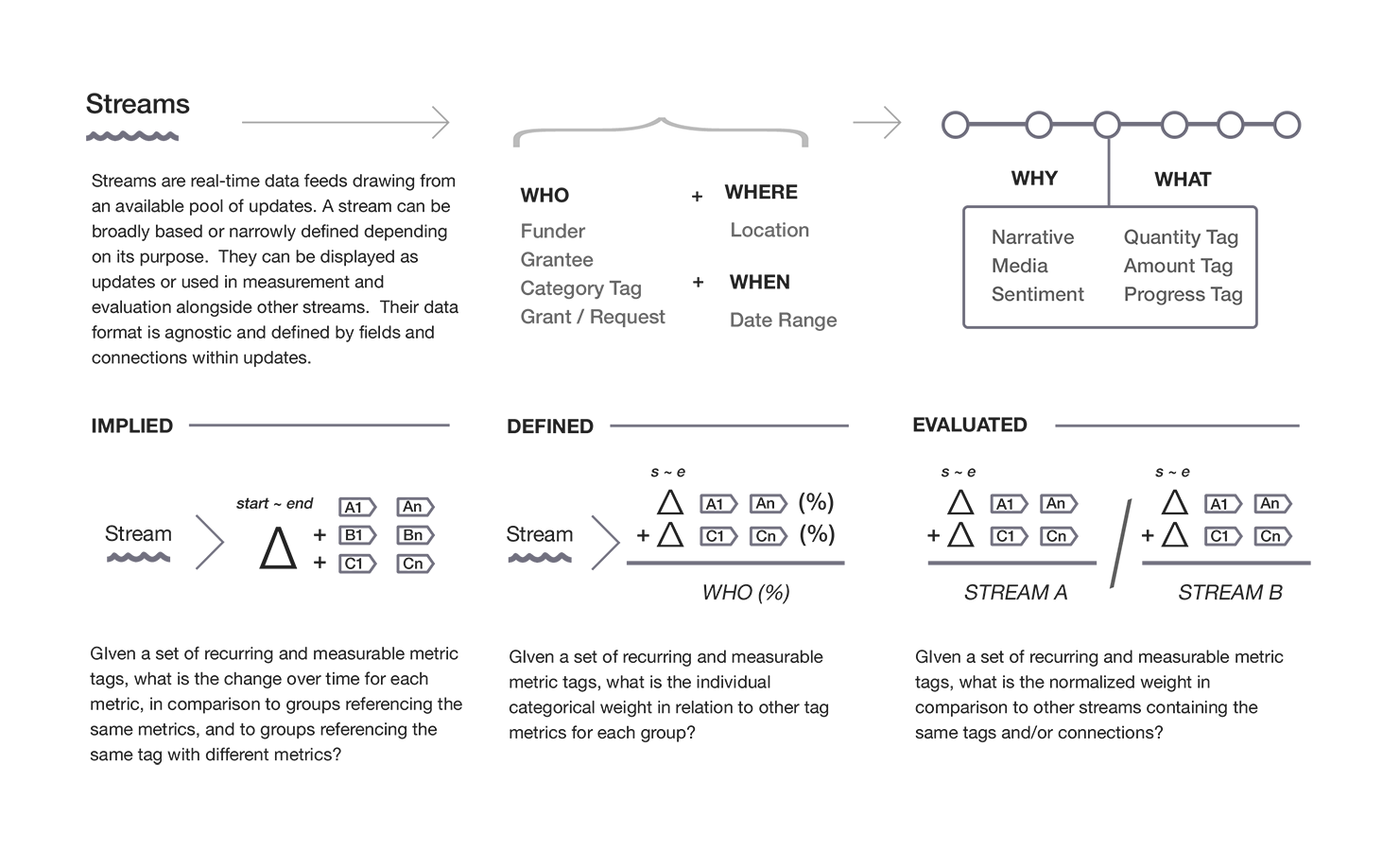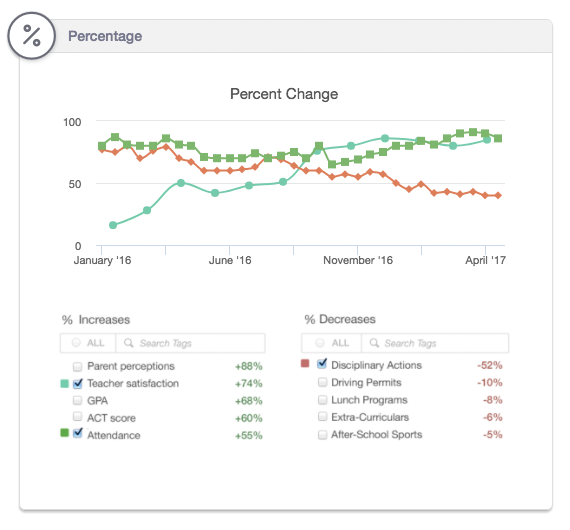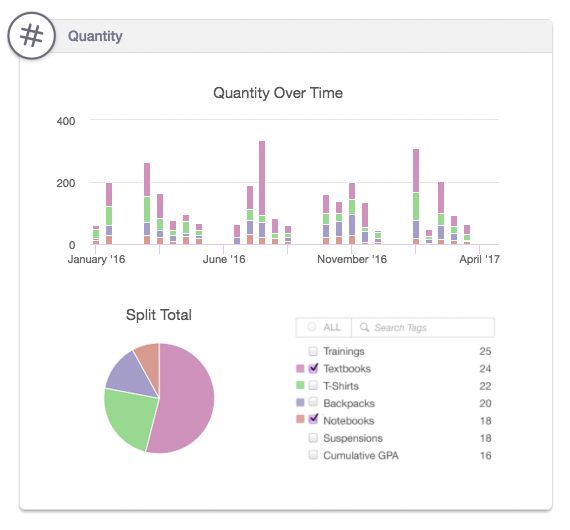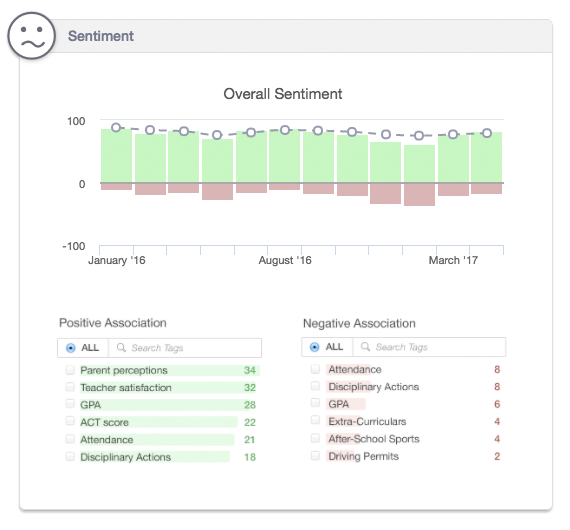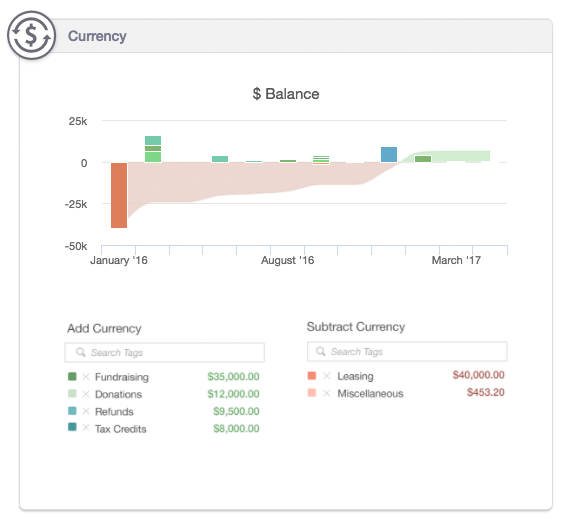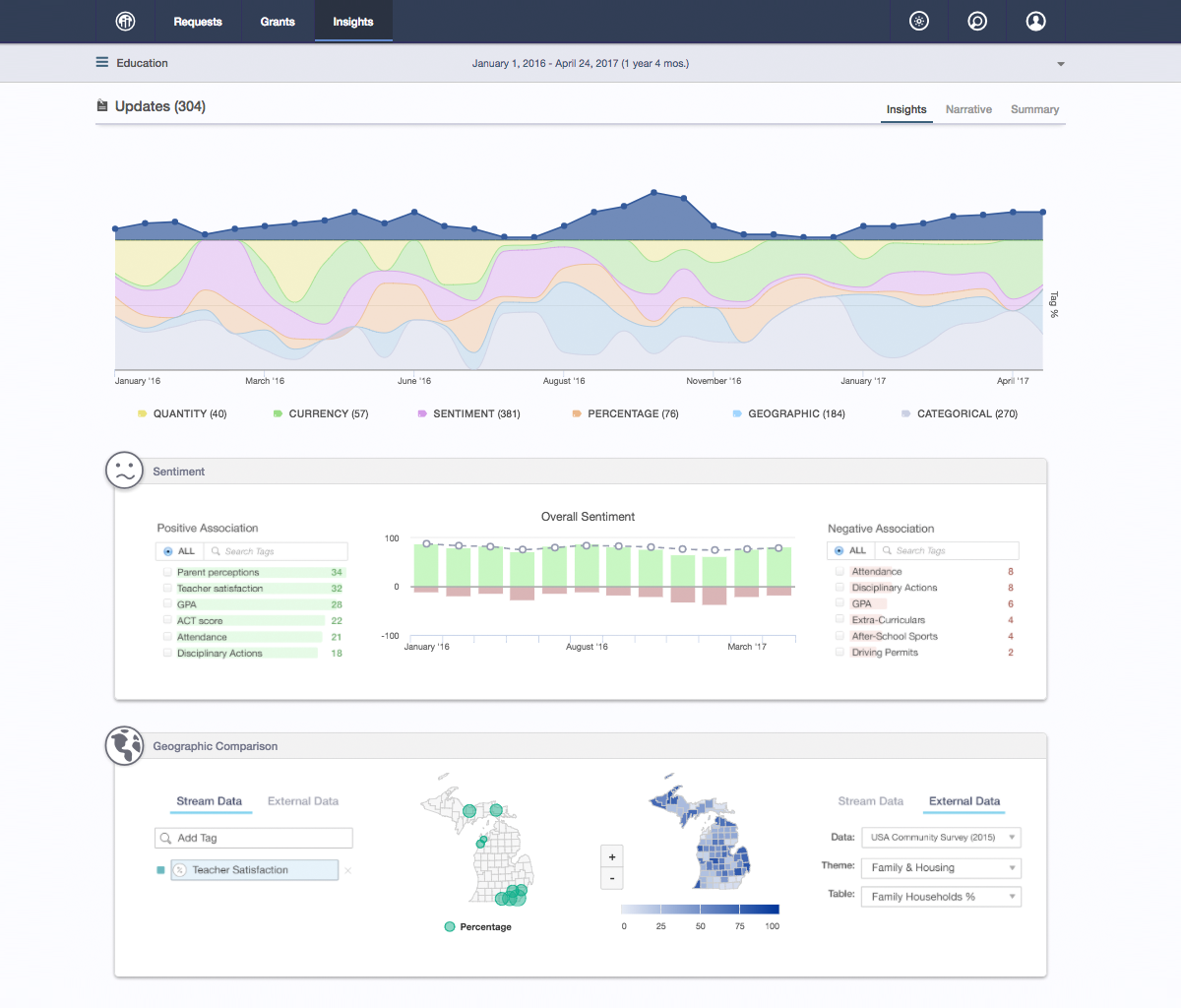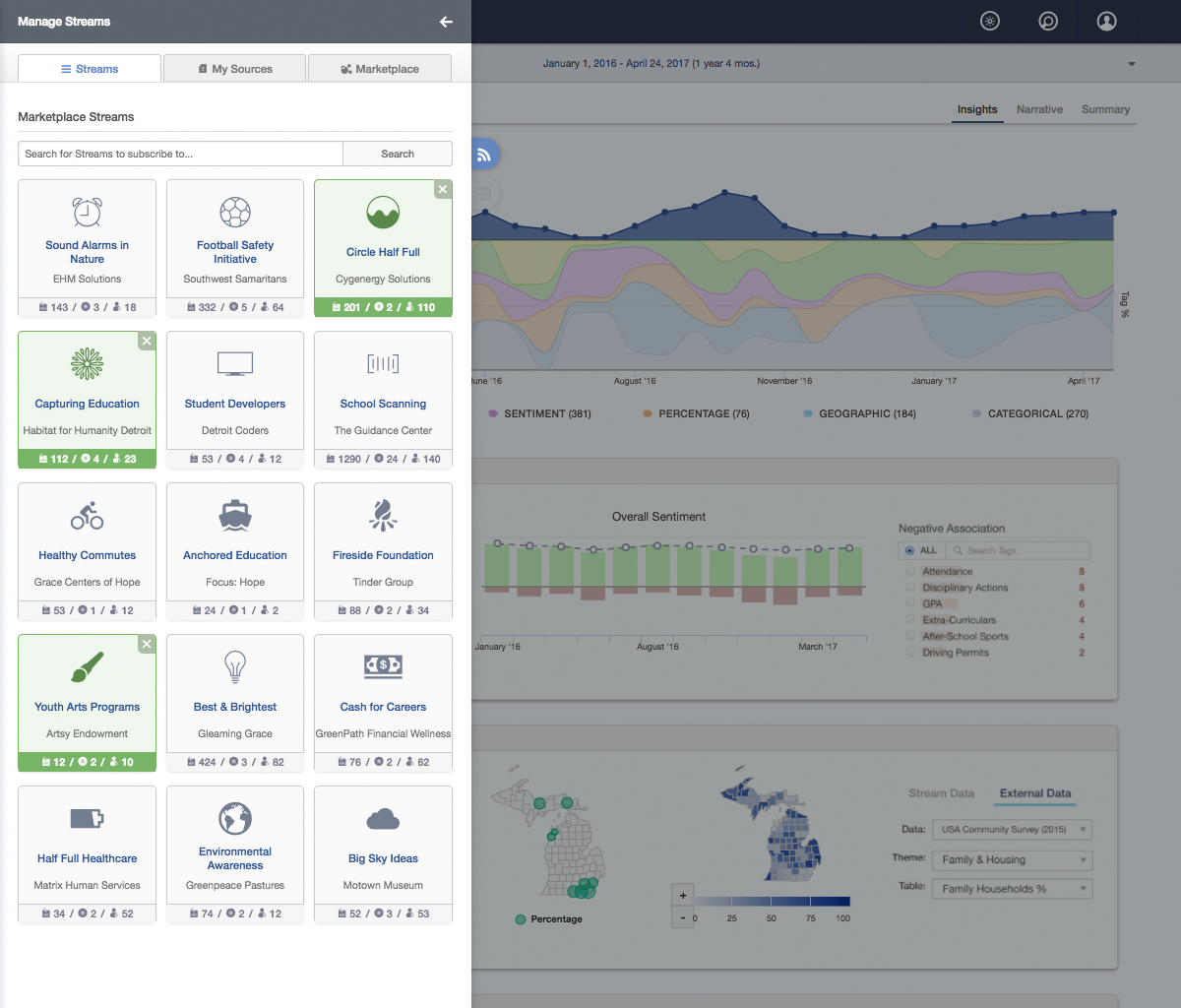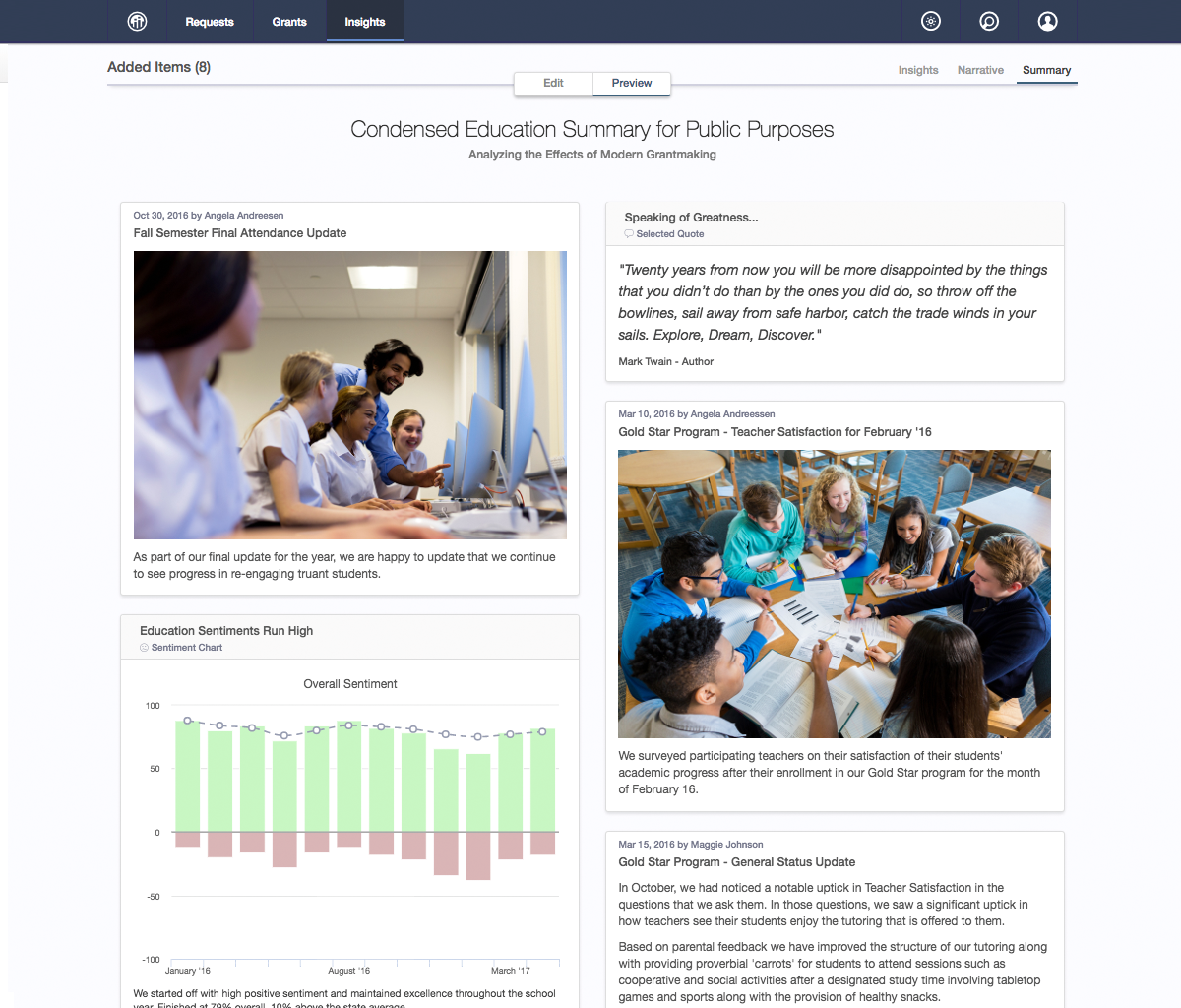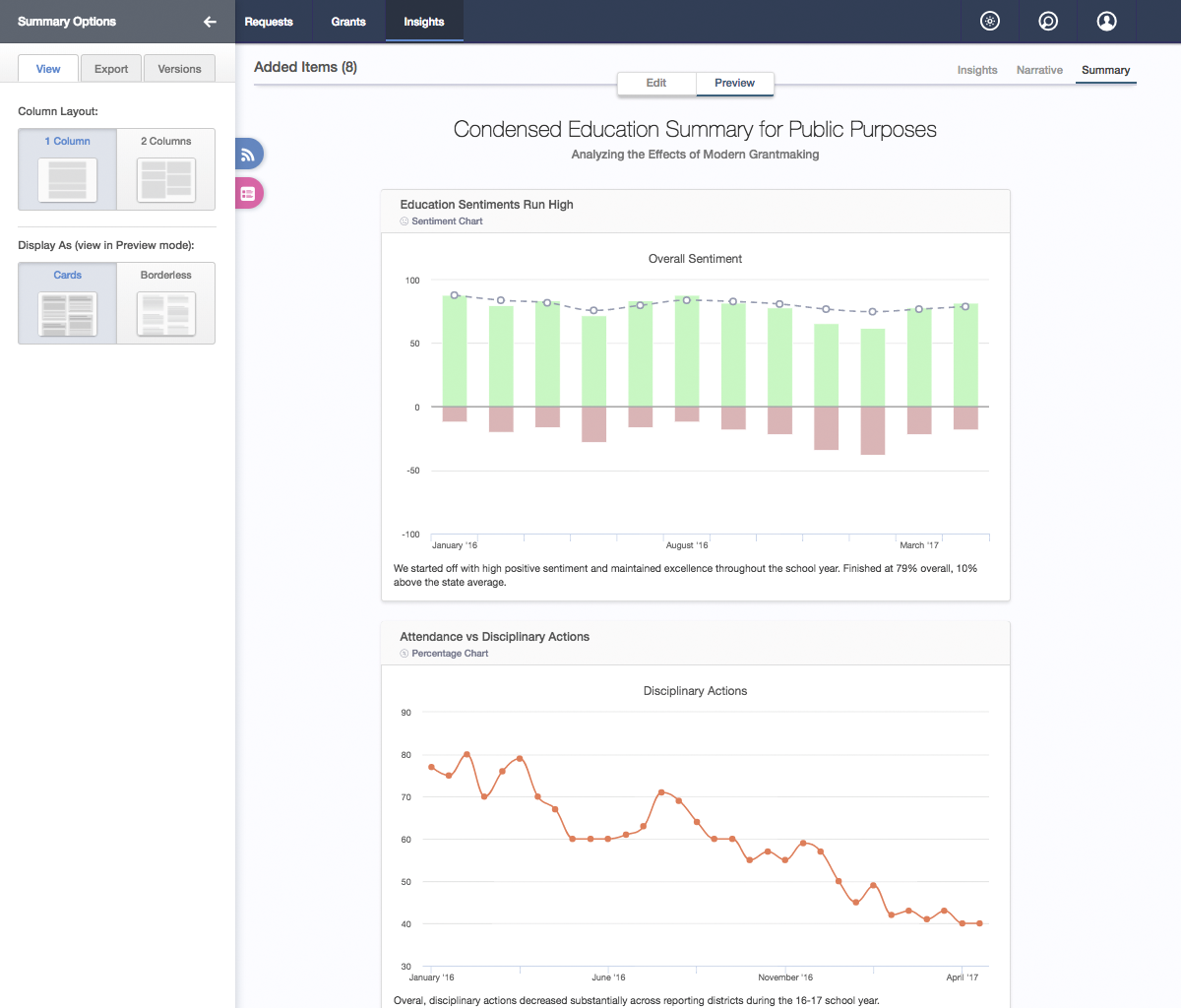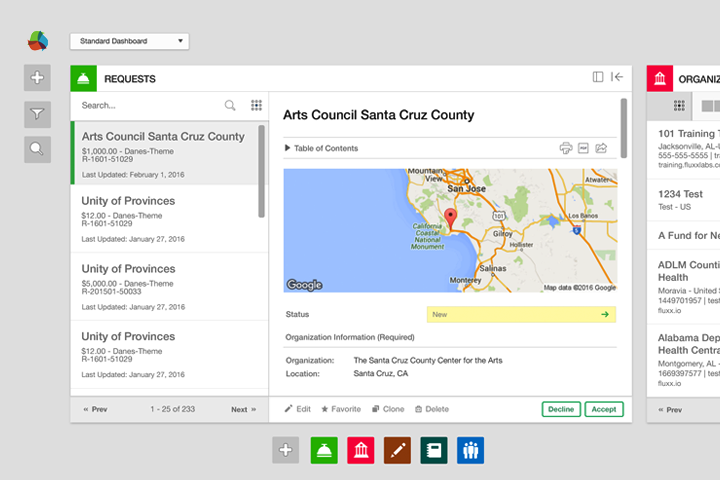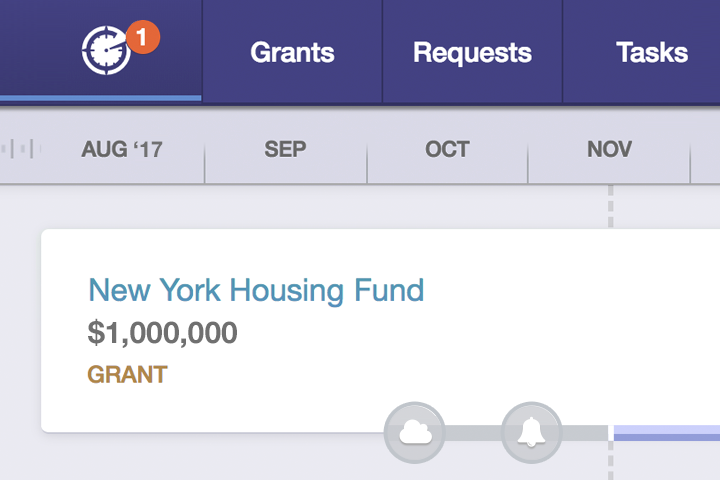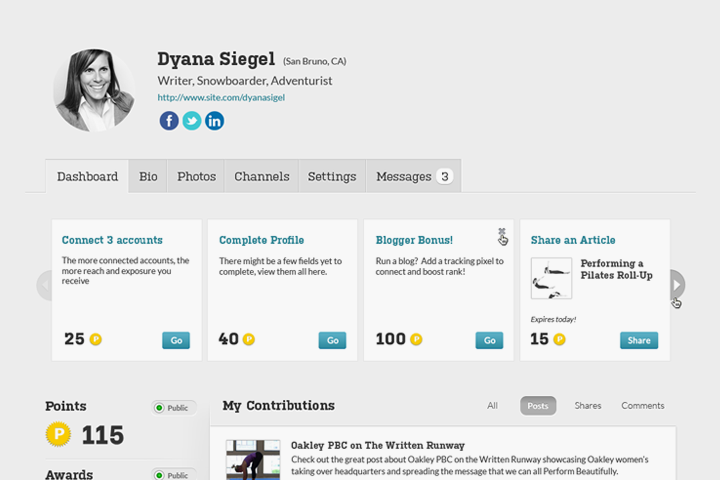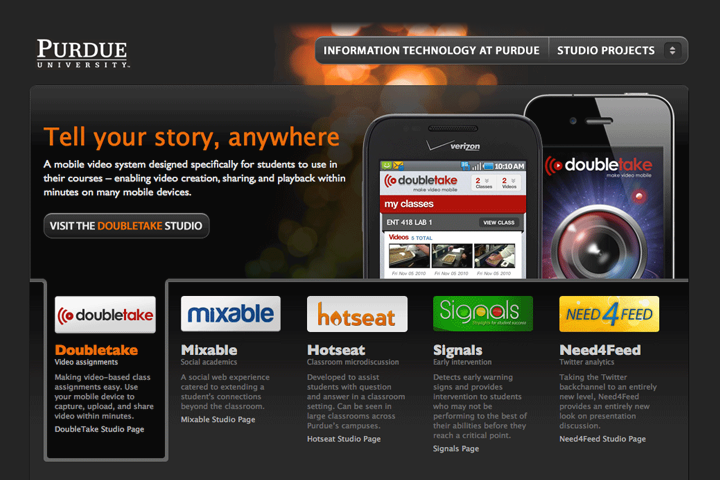Charitable Insights
New product offering for tracking grant outcomes created while leading design at Fluxx.
One of the most rewarding parts of assisting grant making is getting a glimpse into the outcomes made possible. Organizing, measuring, and gathering data for impact requires time and patience for both the work taking place along with results to be seen in aggregate.
There is currently a debate taking place in philanthropy with regards to evaluating similar grants in meaningful ways. On one hand, a foundation can require specific metrics be reported, but this may overlook other meaningful ones which would otherwise be provided. There is also the problem of frequency and the rate at which certain data should be measured in order to make an assessment. Lastly, what are the ways foundations and non-profits can collaborate on shared initiatives to see the bigger picture and not just their own.
Modeling Updates
Our application was already being used to organize reports and other documentation for each grant. While useful for foundations, there was still a gap in how grantees could share updates with foundations along with tracking events and activities of their own. Updates were built around tagging grants and categories with loosely coupled metrics of sentiment, currency, quantity, percentages, and geography. The grants were linked to foundations who had placed them into program areas, and the metrics could be specified or mapped by the foundations to their own sets of data. This gave the non-profits the tools to provide results for work which could be mapped at a later time to the foundations initiatives.
Measuring Metrics
Using a loosely coupled set of metrics, we could group grants according to program areas, initiatives, and location and pull out common data for comparison. This framework was designed to be flexible so that taxonomy could be layered in separate or adjusted later for other types of measurements. Having a rich history of constructing reports for foundations, we started with hard metrics like quantity, percentage, currency, geography, and subjective ones like sentiment, category, and narrative.
Metrics Insights
Capturing insights from metrics is one of the ways we saw impact being inferred from the product. In addition to preserving the underlying narrative, these insights could be created ad-hoc and include outside data relevant to the sample size, rather than forcing the measurements into a pre-determined system prone to change later on. For instance, across grants related to air quality, one could extract a yearly carbon measurement quantity. That metric/tag combination would connect to the grant and (by extension) the foundation funding the work. While the foundation could request the specific measurement, they could also evaluate metrics implicitly and weigh them separately, such as by funding amount. For added context, other sources could be shown such as funding by location or similar air quality measurements.
Insights Summaries
With the tools available to record, connect, and visualize updates, there was still a big piece remaining - How were foundations, non-profits, and others going to make use of the data outside of our sandbox? We put together a summary builder to demonstrate some options for exporting collections of insights and narratives, along with adding text and images to tie it all together. Any chart or narrative could be captured and added to a summary where the arrangement could be configured. The summary could be shared with another editor to make changes, or as an exportable pdf or document. This allowed for collaboration on works in progress along with a source of charting and narrative for reports submitted during the course of a grant.
Turning Tides
There is much to be settled with regards to measuring impact in philanthropy. Companies like Fluxx will continue to help foundations share and learn from one another in their approach to measurement and taxonomy. As new channels of communication are opened up between grantor and grantee, the depth of reporting will continue to improve. While we look forward to reading the rich reports published by foundation program officers, keep an eye out for what becomes of the new forms of collaboration between grantees and non-profits making waves in the philanthropy world.

